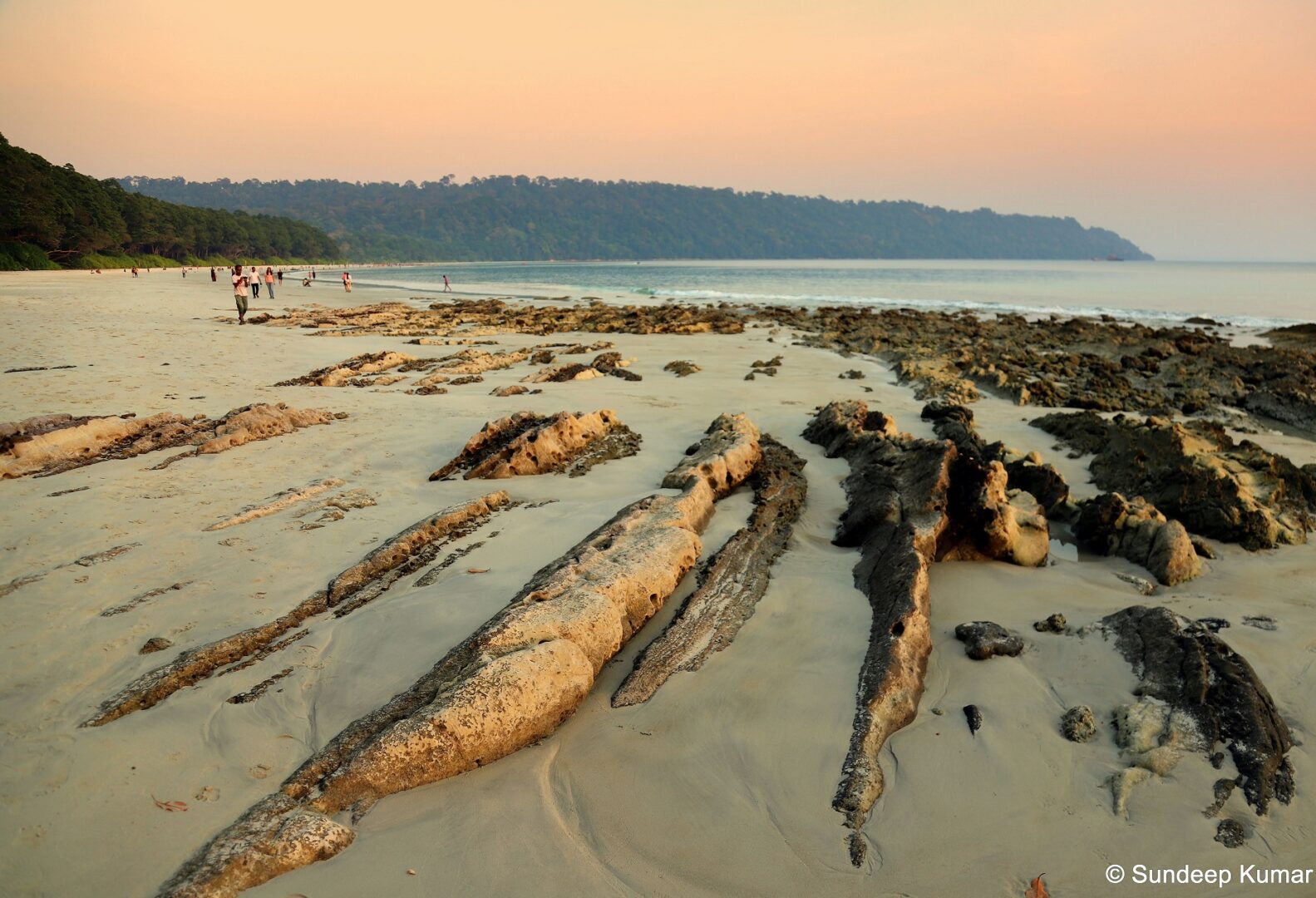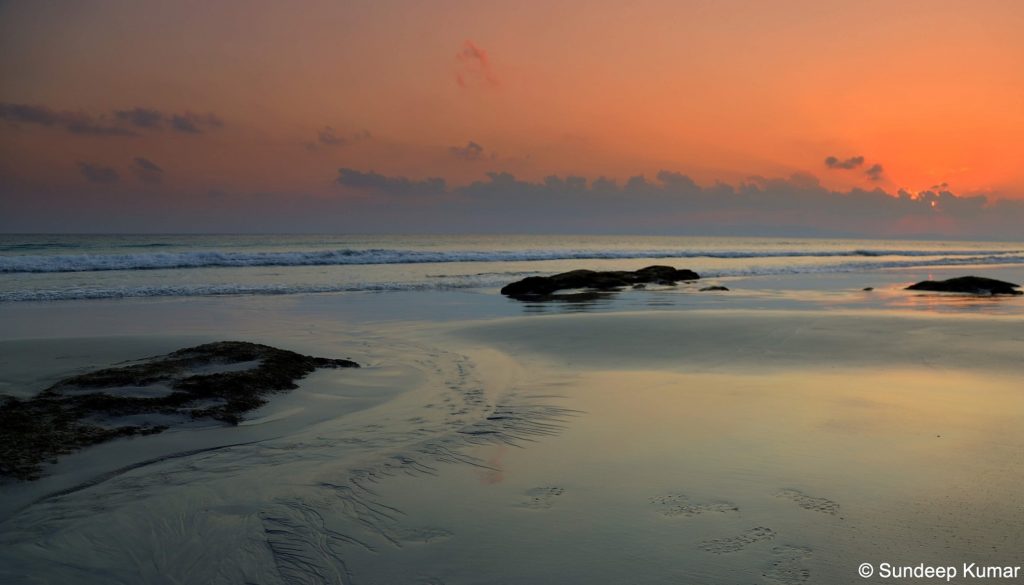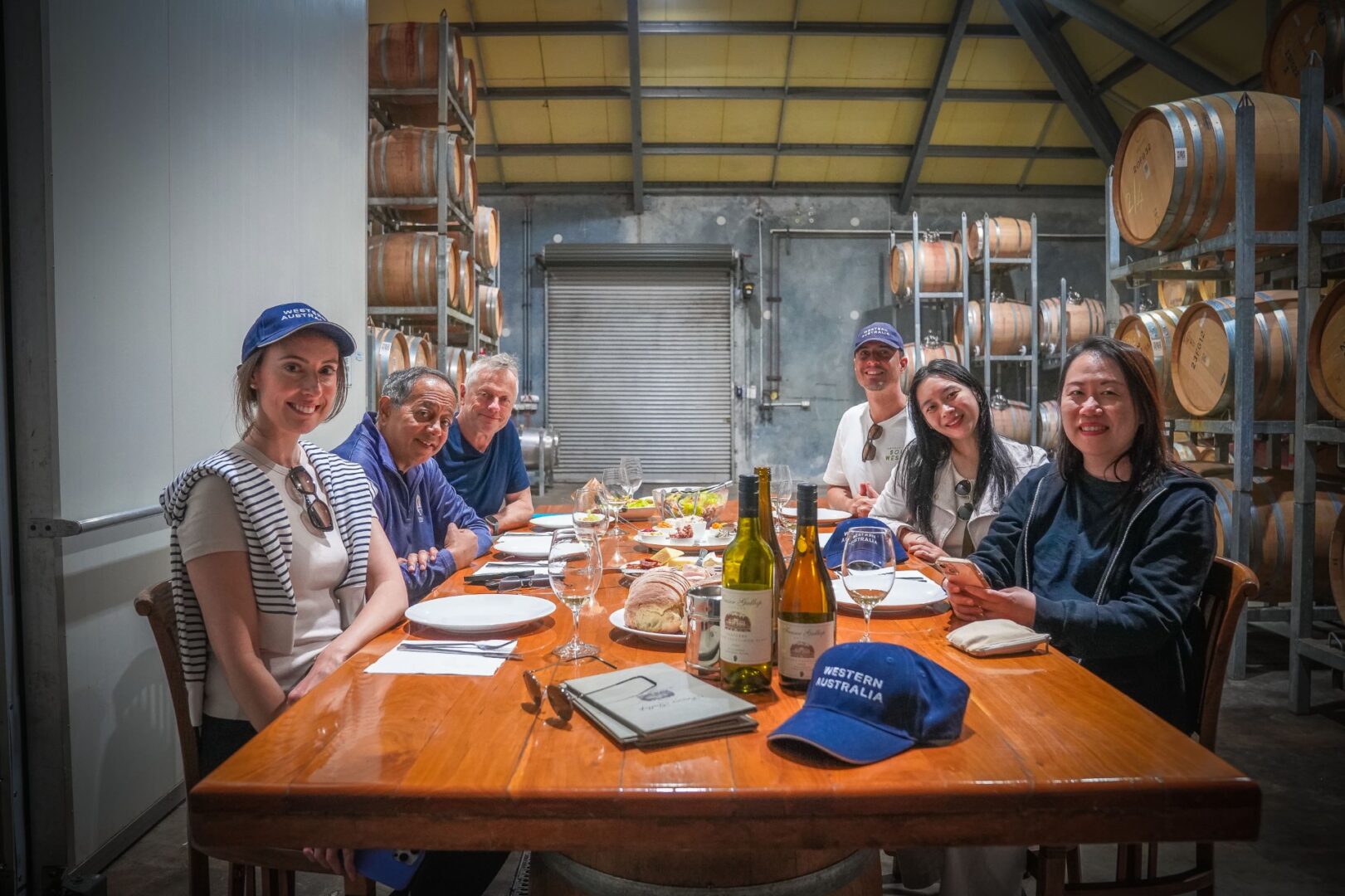
Andamans Interview: Samit Sawhny, Founder of Barefoot Havelock
Resort owner Samit Sawhny talks about founding Barefoot at Havelock in the Andamans and the challenges facing the islands as they open up.

This article originally appeared in the July/August 2019 edition of Action Asia magazine featuring Barefoot Havelock, Andamans.
What first brought you to Havelock Island?
I came to Havelock as a backpacker, in December 2001. Havelock, Andamans, had only recently been opened up to visitors, [and] I was blown away by its beauty. I had my magic moment of realisation, floating on my back in the sea off Beach No 7 at Radhanagar. I looked back towards shore and saw crystal-clear water lapping gently on a broad sweep of powder-white sand, backed by dense green rainforest, and I knew that this was it.

Where did tourists stay back then?
Havelock itself was relatively untouched. You could camp on the beaches. Apart from a government guesthouse, there were only a few backpacker units with beds for US$1-2 per night. These were mostly empty. Official statistics show a total of just over 4,000 tourists for the entire year. Tourists were all backpackers who mostly arrived by ship from mainland India (threedays journey), as did I. Radhanagar beach was empty – zero day visitors and the only accommodation behind it was Jungle Resort which was where I stayed and which is now Barefoot (its owner is a shareholder in Barefoot). Land was selling at Rs4 lakhs an acre (US$6,000). It was thought of as ‘uninvestable’ at the time.

What steps have you have taken to keep your resort eco-friendly?
Our land was a banana plantation, which we cleared to plant endemic trees, and now, two decades on, we blend seamlessly with the surrounding forest. We are water-independent, relying upon judicious water management and a freshwater spring that emerges out of the ground at the base of forested hills onto our land. We farm much of our produce and run the only organised piggery on the island, using the animals not only as food but also a highly efficient means of waste disposal. We built the resort with eco-friendly natural materials such as wood, cane and thatch and built on stilts to ensure that we do not interfere with natural runoff. We have struggled with energy issues: our success in reforestation and the highly dense canopy have closed certain wind and solar options, but we are trying to find new solutions during our scheduled refurbishment.

How much of the area of the Andaman Islands is open to development?
Of 572 Islands, only 36 are inhabited and the rest are protected. 85% of Havelock is protected as Reserve Forest. The balance is land that was allotted mostly to farmers for agriculture. This land is open to any Indian citizen to buy.

What is your view of the expected influx of visitors brought about by the relaxation of travel permits and the new airport?
Should there be some attempt to regulate arrivals? Tourism to Andaman has been on a high growth path for the past decade. Regulating arrivals is not practical and is also unnecessary as long as touristed islands are given adequate infrastructure to deal with the fluctuating population and as long as protected areas remain protected.

Ten projects are planned on islands that have been opened for development (Aves, Long, Neil and Smith) with more in the pipeline. How will these islands handle the surge in tourism that is bound to follow?
The planned projects address the highest end of the market, and are targeting an elite segment, which will not add much to tourist footfalls. It is possible that the projects at Long, Aves and Smith will bring additional tourism to the more populated North and Middle Andaman Islands, with local operators piggybacking on ancillary development attached to these projects, but these areas are all significantly under-visited and any additional arrivals here would be welcome.
I came to Havelock as a backpacker, in December 2001. Havelock had only recently been opened up to visitors, [and] I was blown away by its beauty. I had my magic moment of realisation, floating on my back in the sea off Beach No 7 at Radhanagar. I looked back towards shore and saw crystal-clear water lapping gently on a broad sweep of powder-white sand, backed by dense green rainforest, and I knew that this was it.

What kind of policies would you like to see implemented to address the development/ environment tradeoff?
With more than 80% of the land area and more than 90% of the islands protected as National Parks, Sanctuaries or Reserve Forests, the development model for Andaman needs to be tailored to fit.
Most of the world-class beaches in Andaman are backed by protected forest, and not open for development. Coastal Regulation Zone (CRZ) laws say all development/construction should be at least 50 metres behind the beach. This precludes overwater bungalows, besides which, wave action at beaches during the monsoons makes these unviable – a Maldives-style model is clearly impossible. Our USP is our protected areas and the Andamans are a counterpoint to unfettered development elsewhere.
Our model should respect and showcase our protected areas, perhaps make a few of them accessible for day visits in a responsible manner, and concentrate all physical development on a select few inhabited islands only, which are given world-class infrastructure, especially for waste and water management.

Despite government claims of protecting the way of life of indigenous tribes of the Andamans, their populations have been steadily declining. What are your views?
The post-independence story of the indigenous tribal populations in Andaman is a mixed bag. Although many of the woes of the Great Andamanese and the Onge [two of the four recognised tribes] stem from the period under British rule, successive Indian administrations made many errors, and did not or would not, make meaningful attempts to break the die that was cast. The numbers of Jarawa and their land have actually increased, but so too has their interconnectedness with non-aboriginals. There is no short answer on how they are doing. With regard to the Sentinelese: the tribe have shown every indication that they wish to be left alone. The government is respecting that, and it is commendable. The recent [November 2018] incident involving the American missionary is a case in point. The response showed that the Indian government would not succumb to pressure to retrieve the body and would uphold the right of the Sentinelese to set their own rules on their own island. Very few countries in the world would allow a part of their territory to be run according to tribal law: this is effectively what happened here and credit should be given where it’s due.

![]()








Informative and thought provoking!
High end tourists only?
What about annual rationing for different categories?
School and college students who meet certain criteria for instance?
Thank you Suresh ! Yes mainly high-to mid-end tourists as it does cost quite a bit to get to the Andamans by air. About Rs 15-16K if you book well in advance. And the good places to stay at are in the Rs 7-8K plus range. For the same reason of cost I don’t think it would be viable for school and college students. Once there the experience far surpasses Goa by a country mile so put it on your bucket list for sure. Please read my other two blogs on our personal visit to the Andamans https://www.makemytrip.com/blog/barefoot-at-havelock and https://www.makemytrip.com/blog/colonial-heritage-of-andamans for more details 🙂
Thanks for this – sounds wonderful and makes me want to visit.
COVID19 is likely to have a massive impact on mass tourism, whereas elite tourism will better weather the crisis. Interesting to ponder which sort of tourism the Andamans should pursue.
Thanks Shilpa ! You are right. The Andamans are just right for high-to-mid-end tourists to travel to in a post-Covid-19 era. Far enough away and so widely spread out I would have no fear of the virus there. Great alternative to the Maldives and far superior to Goa 🙂 Please read my other two blogs on our personal visit to the Andamans https://www.makemytrip.com/blog/barefoot-at-havelock and https://www.makemytrip.com/blog/colonial-heritage-of-andamans for more details 🙂
Good interview & photos would love to visit Andamans one day.
Hopefully we are protecting the indigenous tribes from declining
in population.
thanks
Thanks Ajay ! Please read my other two blogs on our personal visit to the Andamans https://www.makemytrip.com/blog/barefoot-at-havelock and https://www.makemytrip.com/blog/colonial-heritage-of-andamans for more details 🙂
Enjoy your ‘transporting us there’ writing; Keep it going. Read Tarini’s write up on
China too, great!
Keep writing!
Thanks Sunil ! Please read my other two blogs on our personal visit to the Andamans https://www.makemytrip.com/blog/barefoot-at-havelock and https://www.makemytrip.com/blog/colonial-heritage-of-andamans for more details 🙂
Will let Tarini know. She will also be posting on her recent learn-to-surf trip to Bali so do watch out for that !!